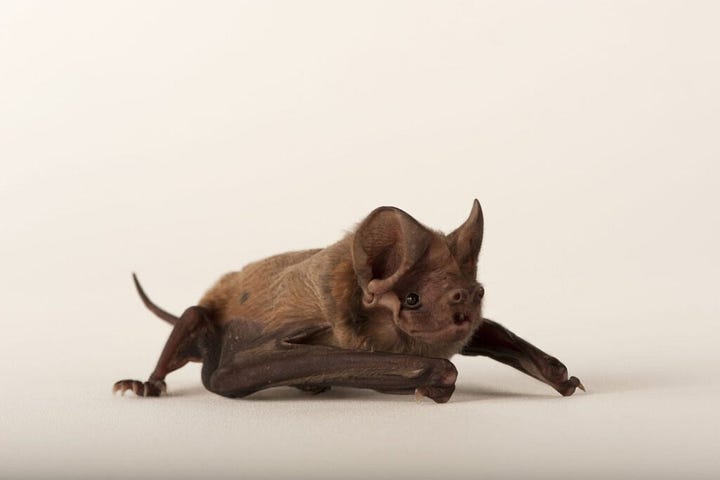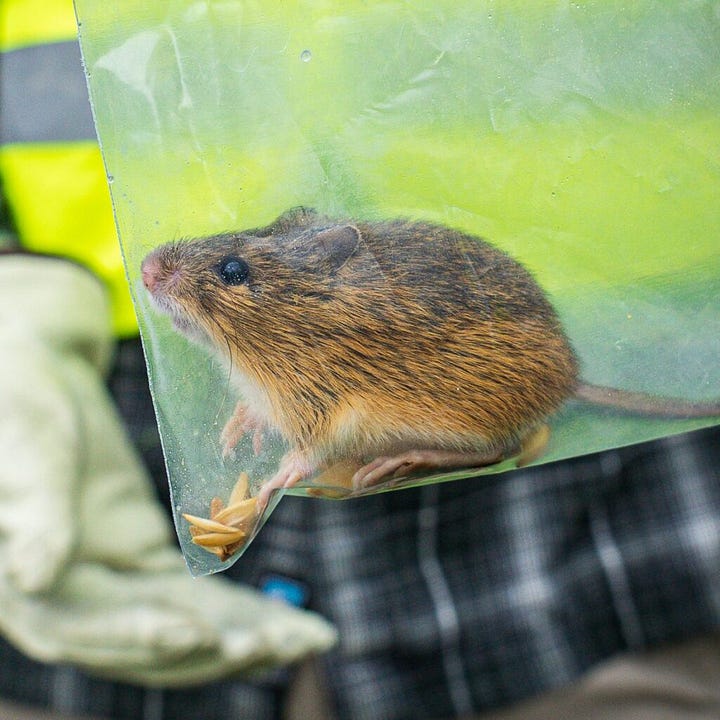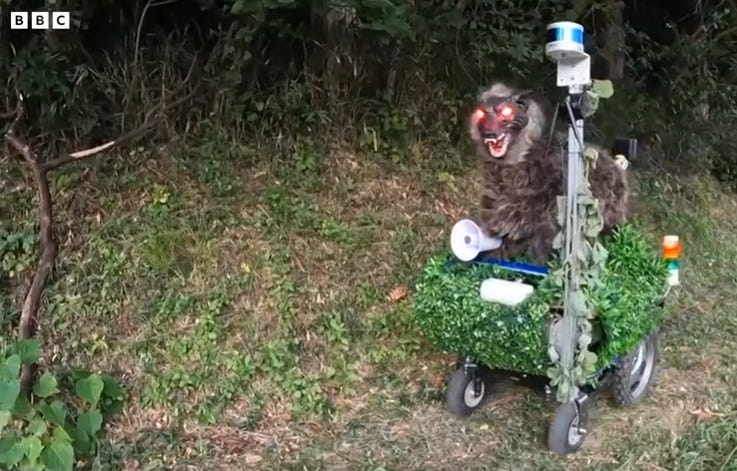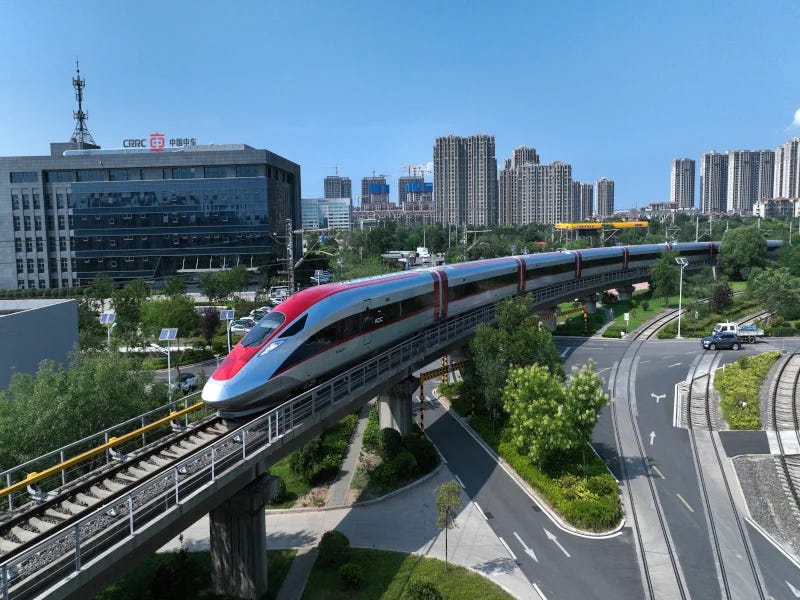The Weekly Anthropocene, October 11 2023
Gasoline demand peaks in China (yay!), a robot called Super Monster Wolf, fighting for a future for Florida coral, high-speed rail in Indonesia, and more!
China
China’s transition to electric vehicles is happening faster than anyone dared hope, with plug-in EVs rising from 6% of new passenger vehicle sales in 2020 to 38% in likely August 2023 figures. Sinopec, China’s giant state-owned oil and gas conglomerate, now reports that Chinese demand for gasoline is likely to peak this year. To be clear, this is the world’s largest oil and gas company (Sinopec) saying that the country with the most cars in the world (China) will be buying less and less gasoline every year for the foreseeable future! That’s a big deal. This is great news in the global fight against air pollution and climate change, and yet another sign that decarbonization of human civilization is achievable sooner than we expect!
Japan
As Japan ages1 and farmlands return to forest, the northern island of Hokkaido is seeing a boom in bear populations. Recent estimates calculate that there are now close to 12,000 brown bears on Hokkaido (which is smaller than the American state of Virginia), up from about 5,200 in 1990. Now, an innovative solution to prevent human/bear conflict is spreading around the island. A line of solar-powered wheeled wolf-like robots dubbed “Super Monster Wolf,” first developed in the mid-2010s to scare wild boars away from farms, are now proving even more useful at keeping bears from entering cities. They’ve been ordered by many local governments after rave reviews from early adopters, with researchers finding that the robot wolves’ 90-decibel “howl” effectively deters bears for a 1-kilometer radius—better than many electric fences! This is a great example of the kind of delightfully innovative Anthropocene conservation action that can help create a thriving landscape of human/wildlife coexistence.
You live in a world where robot monsters keep the peace between resurgent wildlife and human cities. What a fascinating time to be alive!
United States




Revive & Restore is a cutting-edge “genetic rescue” conservation organization that has long fascinated this newsletter. Their many recent successes include creating the world’s first cloned black-footed ferret and cloned Przewalski’s horses (both endangered species), developing a synthetic alternative to horseshoe crab blood (for pharmaceutical manufacturing), and inventing new techniques to cryopreserve and revive coral fragments. (Also, check out our interview with Revive & Restore’s Ben Novak, currently working to bring back the passenger pigeon).
Now, Revive & Restore has signed an unprecedented partnership with the U.S. Fish & Wildlife Service to create a national “biobank,” cryopreserving samples of the DNA of America’s endangered species to preserve genetic diversity for future rescue biologists to work with. (Living tissue is collected via small skin biopsies, without harming the animals). Currently, only about 14% of U.S. endangered species have living tissue cryopreserved, but this partnership aims to change that. Essentially, the USFWS will be making its own version of the San Diego Frozen Zoo or Svalbard Global Seed Vault, a library of frozen biological wealth. The physical samples will be stored at a USDA facility in Colorado, while their genomes will be sequenced and uploaded online for researchers to examine.
The new partnership has already collected tissue samples from species including the Mexican wolf, Sonoran pronghorn, Florida bonneted bat, and Preble’s meadow jumping mouse, safeguarding their genetic heritage to help enrich their species in the future. This isn’t just for “de-extinction” in a worst-case scenario, either; it can be vital to help prevent inbreeding depression in the near-tern. For example, when Revive & Restore created the black-footed ferret clone “Elizabeth Ann” (using a sample from the San Diego Frozen Zoo) it brought back substantial genetic diversity to the species. All black-footed ferrets had been descendants of seven individuals in an early captive-breeding program until the birth of Elizabeth Ann, a clone of an eighth who had had no natural offspring.
Human ingenuity continues to provide new ways to help our fellow Earthborn creatures! Fascinating news.
Florida


Healthy coral cover in the Florida Keys has declined by 90% since the 1970s, due to a range of threats from warming and acidfiying waters to boat and storm damage. Now, several innovative projects are working hard to build resilient new Florida Keys coral reefs that can survive the challenges of the Anthropocene. The National Oceanic and Atmospheric Administration (NOAA) is running Mission: Iconic Reefs, a project working to grow and plant2 3 million square feet (52 football fields) of Florida Keys reef with tougher, bleaching-resistant corals by 2050.
And to give those corals a chance to grow, the Mote Marine Lab in the Florida Keys is now breeding an army of algae-eating Caribbean king crabs to defend the reefs. Algae tends to overgrow and outcompete coral on damaged reefs (a problem made worse by human sewage and fertilizer runoff providing a quick surge of nitrogen and phosphorus, enabling algal blooms). Recent experiments found that reefs stocked with extra algae-eating crabs had 85% less algae and more young coral and fish than low-crab reefs. The lab has a few hundred king crabs now, should start introducing them to reefs by 2024, and plans to scale up to breeding 250,000 king crabs per year for eventual release as algae-grazing coral guards. Excellent work!
Indonesia
Indonesia recently completed its first high-speed train line, from Jakarta to Bandung on the populous island of Java3. It’s named “Whoosh,” with the Indonesian backronym “Waktu Hemat, Operasi Optimal, Sistem Handal,” or “timesaving, optimal operation, reliable system.” The Whoosh trains can go up to 217 miles per hour (350 kph) and should cut travel time from Jakarta to Bandung from three hours to 40 minutes. National train journeys generally emit just 14% as much carbon dioxide as a domestic flight, so more train infrastructure is good news for reducing greenhouse gas emissions. Indonesia now joins Morocco, Turkey, and very soon India in the informal club of “fast-developing countries that Westerners don’t expect to have high-speed trains but now do.” Great work!
A record-high 29.1% of the 125 million-strong Japanese population is now over the age of 65, in a leading example of the global demographic transition.
Yes, corals are animals, but “plant” just feels like the right word for placing small stationary life-forms in one place and hoping they grow big. And it’s the one Mission: Iconic Reefs uses themselves. It would be fun if we described coral plantings as “stationary coral herds” or “coral ranching,” though!
Note: this project was partially funded by China’s notoriously predatory Belt and Road Initiative, a mostly-ended international lending effort which often took advantage of poorer countries by building low-quality infrastructure, then demanding more money than the countries could pay in exchange. In general, “Belt and Road-funded” is a warning sign for “expensive nonfunctional scam,” but in this case, Indonesia appears to have made the project work, building a demonstrably functional high-speed rail line.






I love your newsletters, please keep up the good work!
I ❤️ this issue! Kudos to China, Japan and Indonesia! Kudos to the bio bank! I love the robot wolf and could use one when I'm on the Yellowstone back country trails.